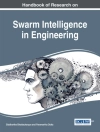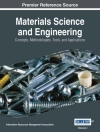Introduction of robotics into agriculture has the potential to lower production costs, reduce the drudgery of tedious manual labor, increase the level of accuracy of mechanized operations, and improve environmental control. Unlike industrial applications that often deal with relatively simple, repetitive, well-defined, and known a priori tasks, agriculture robots usually require advanced technologies to deal with the relatively more complex and highly unstructured and dynamic nature of both biological produce and the environment. This chapter reviews agricultural robotic systems with a focus on recent advances in human–robot collaboration.
Spis treści
- 1 Introduction
- 2 Scope of humanrobot collaboration
- 3 Functionality, design and taxonomy
- 4 Interfaces/interaction design and usability
- 5 Conclusion and future trends
- 6 Where to look for further information
- 7 References
O autorze
Dr Yael Edan is Professor in Industrial Engineering at the Ben-Gurion University of the Negev, Israel, where she is Head of the Intelligent Robotics Laboratory and Director of the Agricultural, Biological and Cognitive (ABC) Robotics Initiative. Professor Edan is a member of the IEEE-RAS Special Interest Group on Agricultural Robotics and Automation and was a member of the American Society of Agricultural Engineers. She is involved in a number of EU research projects (including the Sweeper and CROPS Projects) and is internationally renowned for her research in such areas as human-robot collaboration.












